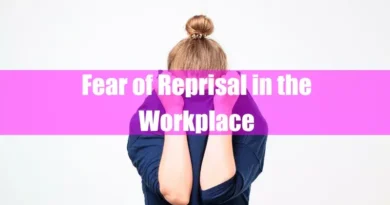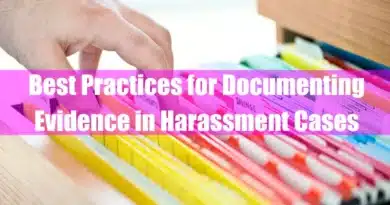Effective Investigations Explained: The Art of Inquiry
Takeaways
| Key Points |
|---|
| Effective investigations are vital for addressing workplace harassment, building trust, and fostering a safe environment. |
| They begin with a solid foundation of clear policies, multiple reporting channels, and a supportive culture that encourages individuals to come forward without fear of retaliation. |
| Qualified investigators are essential, chosen for their impartiality, trauma-informed approach, and relevant expertise to ensure fairness and sensitivity throughout the process. |
| Investigations gather evidence through comprehensive interviews, meticulous documentation, and corroboration, carefully analyzing data to draw unbiased conclusions while mitigating unconscious bias. |
| Finally, outcomes are determined transparently, incorporating appropriate disciplinary actions, support for affected individuals, and measures to prevent future occurrences, creating a workplace culture of respect and accountability. |
Building the Foundation for Effective Investigations
Harassment, in any form, casts a long shadow over workplaces, creating a hostile environment and inflicting pain on individuals. Conducting thorough and effective investigations becomes crucial in such situations to address the specific complaint, ensure fairness, uphold justice, and deter future occurrences.
Firstly, we must acknowledge the immense impact of effective investigations. They foster trust within the organization, demonstrating a commitment to creating a safe and supportive space for everyone. Furthermore, meticulous investigations ensure fair outcomes, holding individuals accountable for their actions while protecting the innocent from false accusations.
Mishandled investigations, on the other hand, can have disastrous consequences, perpetuating the very issues they aim to address and eroding employee morale.
This highlights the immense responsibility that organizations and investigators have to strive for excellence in every step of the investigative process.
Building a Safe and Effective Framework for Investigations

A. Bricks of Trust: Building a Supportive Environment
Before the investigation even begins, the foundation needs to be laid. This means creating a safe and supportive environment where employees feel comfortable reporting harassment without fear of retaliation.
Here are the key ingredients:
- Clear and Accessible Policies: Everyone should understand what constitutes harassment and how to report it. Make policies readily available and easy to comprehend.
- Multiple Reporting Channels: Offer diverse reporting options, such as anonymous hotlines, online forms, or dedicated personnel. This empowers individuals to choose their preferred method.
- Training and Awareness: Regularly train employees on recognizing and reporting harassment, fostering a culture of respect and understanding.
B. Choosing the Right Investigators: Selecting the Guardians of Fairness
Like a strong house needs skilled builders, effective investigations require qualified investigators. Here’s what to look for:
- Impartiality and Objectivity: Choose individuals who are unconnected to the case or parties involved. They should approach the investigation with an open mind and avoid personal biases.
- Trauma-Informed Approach: Investigators should be trained to understand the impact of harassment and conduct interviews sensitively, minimizing further harm to the complainant.
- Relevant Expertise: Look for individuals with experience conducting investigations, knowledge of relevant laws and policies, and strong interviewing skills.
- Considering Power Dynamics: It is crucial to acknowledge the potential for power imbalances in harassment cases. Someone in a position of power may be less likely to be reported or face consequences for their actions. Effective investigations consider these dynamics by ensuring a safe and confidential reporting process, employing diverse investigative teams, and remaining vigilant against potential bias throughout the investigation.
C. Laying the Groundwork: Taking the First Steps
Once a complaint is lodged, the investigation kicks off. Here’s how to ensure a smooth start:
- Prompt Acknowledgement: Respond to the complaint promptly, acknowledging its seriousness and outlining the next steps.
- Thorough Interviews: Conduct in-depth interviews with the complainant, gathering detailed information about the alleged incidents and potential witnesses. Be sensitive and ensure confidentiality.
- Evidence Preservation: Secure and preserve all relevant evidence, including emails, recordings, and witness statements. This strengthens the case and prevents tampering.
- Clear Plan and Timeline: Develop a clear investigative plan outlining the steps involved, who will be interviewed, and the expected timeline for completion.
Conducting the Investigation

A. Mastering the Art of Interviewing: Eliciting Information with Care
Interviews are the cornerstone of any investigation, requiring skilled questioning techniques and sensitivity toward all parties involved. Here’s how to unlock valuable information:
- Open-Ended Questions: Ask questions that encourage detailed responses, avoiding leading questions that sway responses.
- Active Listening: Pay close attention to verbal and nonverbal cues, demonstrating empathy and understanding.
- Identifying Inconsistencies: Gently probe inconsistencies in narratives, seeking clarification without judgment.
- Verifying Information and Corroborating Evidence: To strengthen the case, seek supporting evidence through documents, witness testimonies, or digital records.
- Maintaining Neutrality: Avoid expressing personal opinions or beliefs, ensuring an objective and unbiased approach.
B. Gathering the Puzzle Pieces: Uncovering Evidence Beyond Interviews
Interviews paint a picture, but often, additional evidence is needed to complete the puzzle. Here’s where meticulous evidence gathering comes in:
- Document Review: Scrutinize relevant documents like emails, text messages, and internal records for potential clues or corroborating details.
- Witness Interviews: Interview potential witnesses, including bystanders who may have observed the alleged incidents. Ensure confidentiality and respect for privacy.
- Examining Physical Evidence: Analyze physical evidence, such as recordings, screenshots, or other tangible materials, that can support or contradict claims.
- Confidentiality and Security: Treat all sensitive information with utmost confidentiality and ensure secure storage to prevent leaks or tampering.
C. Putting the Pieces Together: Analyzing and Evaluating Evidence
Once evidence is gathered, it’s time to analyze its significance and draw conclusions. This requires an objective and critical eye that separates fact from fiction.
- Assessing Credibility: Evaluate the credibility of witnesses and evidence, considering potential biases, inconsistencies, and corroboration.
- Identifying Themes and Patterns: Look for recurring themes or patterns of behavior across interviews and evidence, painting a broader picture of the situation.
- Context and Workplace Dynamics: Consider the context in which the alleged incidents occurred, including workplace dynamics, power imbalances, and cultural norms.
- Avoiding Assumptions and Preconceived Notions: Resist jumping to conclusions and maintain an open mind throughout the evaluation process.
- Avoiding Confirmation Bias: Resist the urge to focus only on evidence that confirms your initial thoughts and actively seek out information that might contradict them.
- Triangulation of Evidence: Look for convergence of evidence from different sources (interviews, documents, physical evidence) to strengthen the case and increase its reliability.
- Documenting the Analysis: Clearly document your analysis process, including a rationale for discarding specific evidence and weighting different factors. This transparency ensures accountability and facilitates others’ review.
- Mitigating Unconscious Bias: Investigators are not immune to unconscious bias. To ensure a fair and objective investigation, it is crucial to be aware of potential biases and take steps to mitigate them. This can involve blind reviews of evidence, using structured interview techniques, and consulting with colleagues to discuss potential biases.
D. Closing the Case: Drafting the Investigation Report

After meticulous analysis, the findings must be documented in a clear and concise report. Here’s how to craft an impactful document:
- Clarity and Objectivity: Present the findings clearly and objectively, avoiding personal opinions or speculation.
- Factual Accuracy: Ensure the report is factually accurate, referencing evidence and quotes verbatim where necessary.
- Confidentiality: Maintain confidentiality while addressing key findings and avoiding unnecessary details that could identify individuals.
- Distinguishing Facts from Interpretations: Clearly differentiate between established facts, witness accounts, and your own interpretations of the evidence.
E. Determining Outcomes: Seeking Justice and Delivering Solutions
Once the investigation is complete, it’s time to determine appropriate outcomes based on the findings. This might involve:
- Disciplinary Actions: In cases of confirmed harassment, appropriate disciplinary actions should be implemented based on organizational policies and the severity of the offense.
- Support and Resources: Offering necessary support and resources to individuals impacted by harassment, including counseling, legal assistance, or workplace adjustments.
- Restorative Justice Approaches: Where feasible, consider restorative justice approaches that focus on repairing harm and fostering reconciliation between parties involved.
F. Communicating Results and Next Steps: Moving Forward Transparently
Communicating the results of the investigation is crucial for both transparency and closure. Here’s how to do it effectively:
- Inform Parties Involved: Inform relevant parties about the outcome while respecting confidentiality boundaries. This might include the complainant, respondent, witnesses, and relevant management personnel.
- Address Future Concerns: Acknowledge potential concerns for the future and outline steps the organization will take to prevent further harassment and foster a safer workplace.
- Continuous Improvement: Use the investigation as a learning opportunity, identifying areas for improvement in policies, training, or reporting mechanisms.
Building a Safer Future

Remember, effective investigations go beyond resolving individual cases. They catalyze building a safer and more inclusive workplace for everyone. This requires:
A. Strong Policies and Clear Communication
Regularly review and update anti-harassment policies to ensure clarity, accessibility, and alignment with evolving legal and social standards. Ensure clear communication and understanding of these policies across all levels of the organization.
B. Comprehensive Training and Awareness Programs
Implement comprehensive training programs that educate employees on recognizing, reporting, and preventing harassment. Foster a culture of respect and understanding through ongoing awareness campaigns.
C. Empowering Bystanders
Encourage bystanders to intervene and report suspected harassment incidents. Provide clear mechanisms for reporting and ensure a safe and supported environment for individuals coming forward.
D. Open Communication and Feedback
Cultivate an open-door policy where employees feel comfortable raising concerns and providing feedback on workplace culture and safety issues. Address concerns promptly and transparently.
By implementing these elements, organizations can move beyond reactive investigations and proactively build a workplace culture where harassment is not tolerated, diversity and respect are fostered, and everyone feels safe and valued.
Conclusion: A Call to Collective Action
Effective investigations are crucial, but remember, they are reactive measures. True progress lies in proactive initiatives like comprehensive training, strong policies, and open communication channels. Fostering a culture of respect, diversity, and zero tolerance for harassment requires continuous commitment and collective action from all stakeholders.
Creating a safe workplace is not solely the responsibility of HR or management. Individuals are crucial in recognizing and reporting inappropriate behavior, intervening as bystanders, and contributing to a positive workplace culture.
From speaking up against harmful jokes to holding ourselves accountable for inclusive conduct, shared responsibility empowers everyone to be part of the solution.
The landscape of harassment evolves, and so must our approaches. Regularly revisit policies, training programs, and reporting mechanisms to ensure they remain relevant and effective.
Embrace feedback, learn from past experiences, and stay updated on emerging legal and social standards to improve your organization’s continuous response to harassment.
Creating truly harassment-free workplaces demands a collective commitment. From individuals reporting incidents to organizations prioritizing cultural shifts and legal frameworks upholding justice, a united effort is key. Working together can dismantle harmful norms, empower individuals, and build a future where everyone feels safe, respected, and valued at work.
FAQ
What is the Chain of Custody in investigations?
Chain of custody refers to the chronological documentation or paper trail that records the sequence of custody, control, transfer, analysis, and disposition of physical or electronic evidence. Maintaining an unbroken chain is crucial to establish the integrity and authenticity of the evidence, ensuring it has not been altered or tampered with during the investigation process. This practice is vital for the admissibility of evidence in legal proceedings.
How does Forensic Entomology assist in investigations?
Forensic entomology involves the study of insect biology to estimate the time of death and other details in a legal investigation. By analyzing the types and development stages of insects found on decomposing remains, forensic entomologists can provide critical information about the post-mortem interval, helping to reconstruct timelines and circumstances surrounding a death.
What is Geolocation Analysis in the context of investigations?
Geolocation analysis is the process of determining a device’s or individual’s physical location using digital data. This technique utilizes information from GPS, IP addresses, Wi-Fi networks, and other data sources to pinpoint locations, aiding investigators in tracking movements, establishing alibis, or identifying crime scene locations.
Can you explain Link Analysis and its role in investigations?
Link analysis is a data analysis technique used to evaluate relationships between nodes, such as people or organizations, within a network. By visualizing connections and interactions, investigators can identify patterns, central figures, and potential suspects, thereby uncovering hidden relationships and structures within criminal networks.
What is Metadata Examination in Digital Investigations?
Metadata examination involves analyzing data that describes other data, often used to verify the authenticity or origin of digital files. Metadata can include information such as creation dates, authorship, and modification history, providing investigators with insights into the provenance and integrity of electronic documents and files.
How is Penetration Testing utilized in investigative processes?
Penetration testing, often referred to as ethical hacking, is a simulated cyber attack against a system to identify vulnerabilities that could be exploited. In investigations, this technique helps assess an organization’s security posture, uncover potential weaknesses, and recommend corrective measures to prevent unauthorized access or data breaches.
What role does Polygraph Testing play in investigations?
Polygraph testing measures physiological responses, such as heart rate, blood pressure, and respiration, to determine truthfulness during questioning. While not universally admissible in court, polygraph tests can be used as investigative tools to assess the credibility of individuals and guide further inquiry.
What is Ransomware Analysis in the context of cyber investigations?
Ransomware analysis involves studying malicious software designed to block access to a computer system until a sum of money is paid. Investigators analyze the ransomware’s behavior, distribution methods, and encryption mechanisms to understand its impact, identify perpetrators, and develop strategies for mitigation and prevention.
How does Social Engineering factor into investigative techniques?
Social engineering is the psychological manipulation of individuals into performing actions or divulging confidential information. In investigations, understanding social engineering tactics is crucial for identifying how security breaches occur and for developing training programs to prevent such exploits.
What is a Sting Operation, and how is it conducted?
A sting operation is a deceptive operation designed to catch a person committing a crime by means of a trap or undercover setup. Investigators pose as criminals or victims to gather evidence and apprehend suspects in the act, often used in cases involving drug trafficking, corruption, or solicitation.
Can you define Threat Assessment in investigative work?
Threat assessment is the process of identifying, evaluating, and prioritizing potential threats to determine the level of risk. In investigations, this involves analyzing behaviors, communications, and other indicators to assess the likelihood of violence or criminal activity, enabling proactive measures to prevent harm.
What does Victimology entail in the scope of investigations?
Victimology is the study of victims to understand the dynamics between victims and offenders. By examining factors such as victim behavior, relationships, and circumstances, investigators can gain insights into motives, identify patterns, and develop offender profiles, thereby enhancing investigative strategies.
How is Voice Stress Analysis used in investigative contexts?
Voice stress analysis is a technique used to detect stress in a person’s voice, which may indicate deception. By analyzing vocal frequencies and patterns, investigators can assess the credibility of statements, aiding in interviews and interrogations.
What constitutes Witness Tampering in legal investigations?
Witness tampering is the act of attempting to alter or prevent the testimony of witnesses within criminal or civil proceedings. This illegal interference can include intimidation, bribery, or coercion, undermining the integrity of the judicial process.
What is a Zero-Day Exploit, and why is it significant in investigations?
A zero-day exploit is a cyber attack that occurs on the same day software discovers a weakness before a fix becomes available. These exploits are particularly dangerous because they target unknown vulnerabilities to the software vendor, leaving systems defenseless and requiring investigators to rapidly identify and mitigate the threat.









